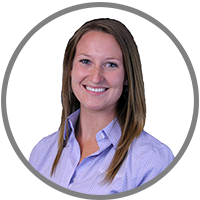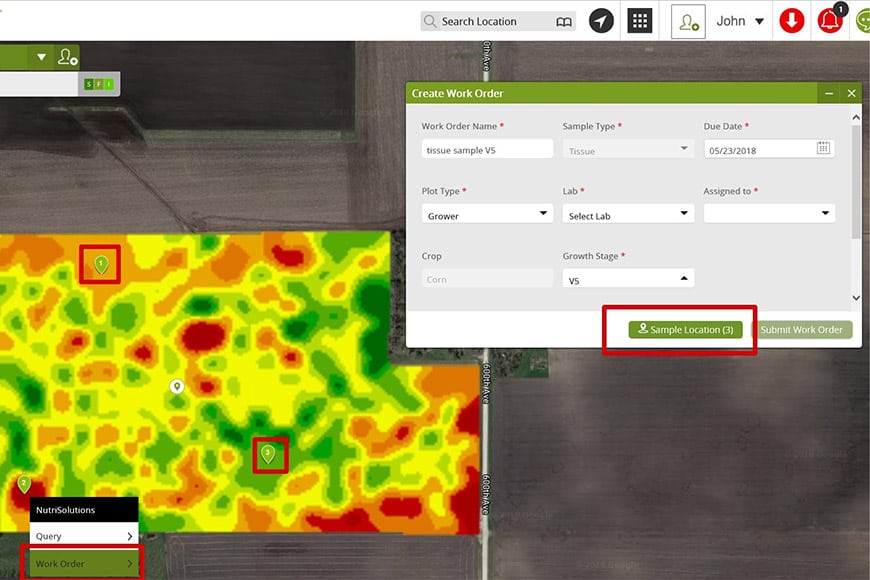Midwest Farmers Combat IDC With Variable-Rate Planting

Many farmers in the northern tier states of the Midwest are all too familiar with the problems iron deficiency chlorosis (IDC) can cause. It’s a significant production issue in the eastern Dakotas, Minnesota and north-central Iowa.
Although the first signs of IDC — interveinal yellowing of young soybean leaves — are not visible until June, there are ways to intervene at planting to prevent this disease from striking a serious blow to your yield potential.
When soybeans can’t take up iron, chlorophyll isn’t formed and chlorosis sets in. There are many factors that can make iron unavailable, including high pH, above-normal lime or nitrate levels, wet soil, cool temperatures and other plant stressors. IDC typically occurs in low-lying areas and around the rims of potholes.
The R7® Tool allows you to locate the least productive areas of your fields using historical satellite imagery. Maps of yield potential, NDVI, soil variability and elevation can help you manage IDC in the zones where it’s most likely to develop. Using the Profitability Map feature in R7 can help you run scenarios to determine the value in limiting treatment to specific management zones.
I work with farmers in my area to build variable-rate planting maps to help combat IDC and make the most of their input investments. We utilize these variable-rate maps to apply varied rates of iron on soybeans and help manage high-potential IDC areas of the fields. Varying population rates within soybean fields have also been a way to make iron more accessible to the soybean crop, helping limit IDC issues. Farmers have used historical maps to identify those IDC-prone areas and keep additional seed investments more targeted. Farmers are utilizing different plant stands and applying iron in-furrow with the seed, and this has helped better manage IDC issues in their fields and be more profitable on the acre.
Work closely with your locally owned and operated WinField United retailer to help you get the most out of historical field data and maximize your ROI potential against IDC pressure in soybeans.
Although the first signs of IDC — interveinal yellowing of young soybean leaves — are not visible until June, there are ways to intervene at planting to prevent this disease from striking a serious blow to your yield potential.
When soybeans can’t take up iron, chlorophyll isn’t formed and chlorosis sets in. There are many factors that can make iron unavailable, including high pH, above-normal lime or nitrate levels, wet soil, cool temperatures and other plant stressors. IDC typically occurs in low-lying areas and around the rims of potholes.
Purposeful IDC management
Variable-rate technology offers a new option for farmers looking to manage IDC while minimizing input application expenses. In the past, the best strategy for managing IDC was to choose the most tolerant soybean variety and apply an in-furrow iron product like IRONFORCE-H at a flat rate. Now with archived data at your disposal, you can target the affected areas of your fields instead of flat-rating the iron application to help minimize costs.The R7® Tool allows you to locate the least productive areas of your fields using historical satellite imagery. Maps of yield potential, NDVI, soil variability and elevation can help you manage IDC in the zones where it’s most likely to develop. Using the Profitability Map feature in R7 can help you run scenarios to determine the value in limiting treatment to specific management zones.
I work with farmers in my area to build variable-rate planting maps to help combat IDC and make the most of their input investments. We utilize these variable-rate maps to apply varied rates of iron on soybeans and help manage high-potential IDC areas of the fields. Varying population rates within soybean fields have also been a way to make iron more accessible to the soybean crop, helping limit IDC issues. Farmers have used historical maps to identify those IDC-prone areas and keep additional seed investments more targeted. Farmers are utilizing different plant stands and applying iron in-furrow with the seed, and this has helped better manage IDC issues in their fields and be more profitable on the acre.
Work closely with your locally owned and operated WinField United retailer to help you get the most out of historical field data and maximize your ROI potential against IDC pressure in soybeans.





